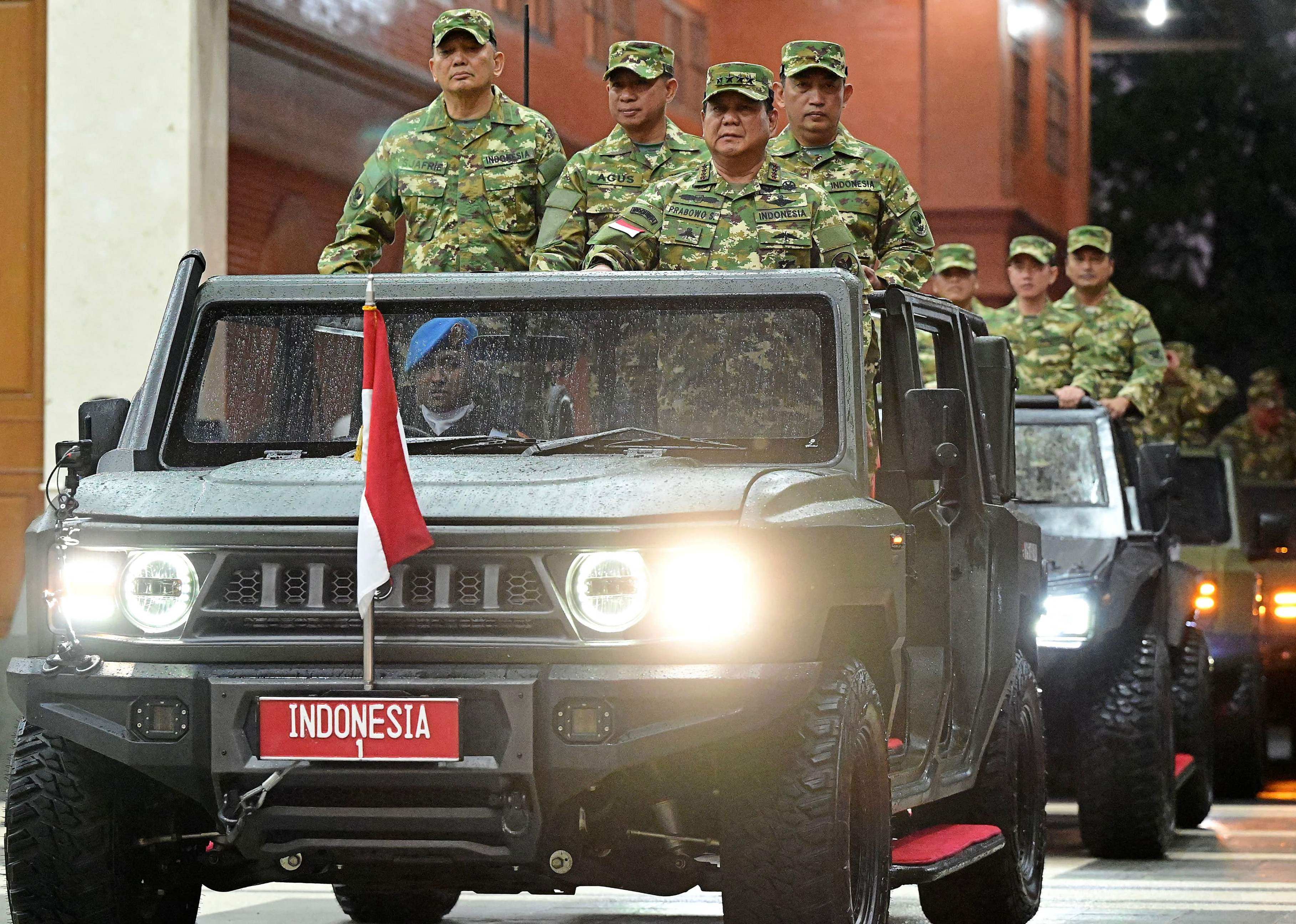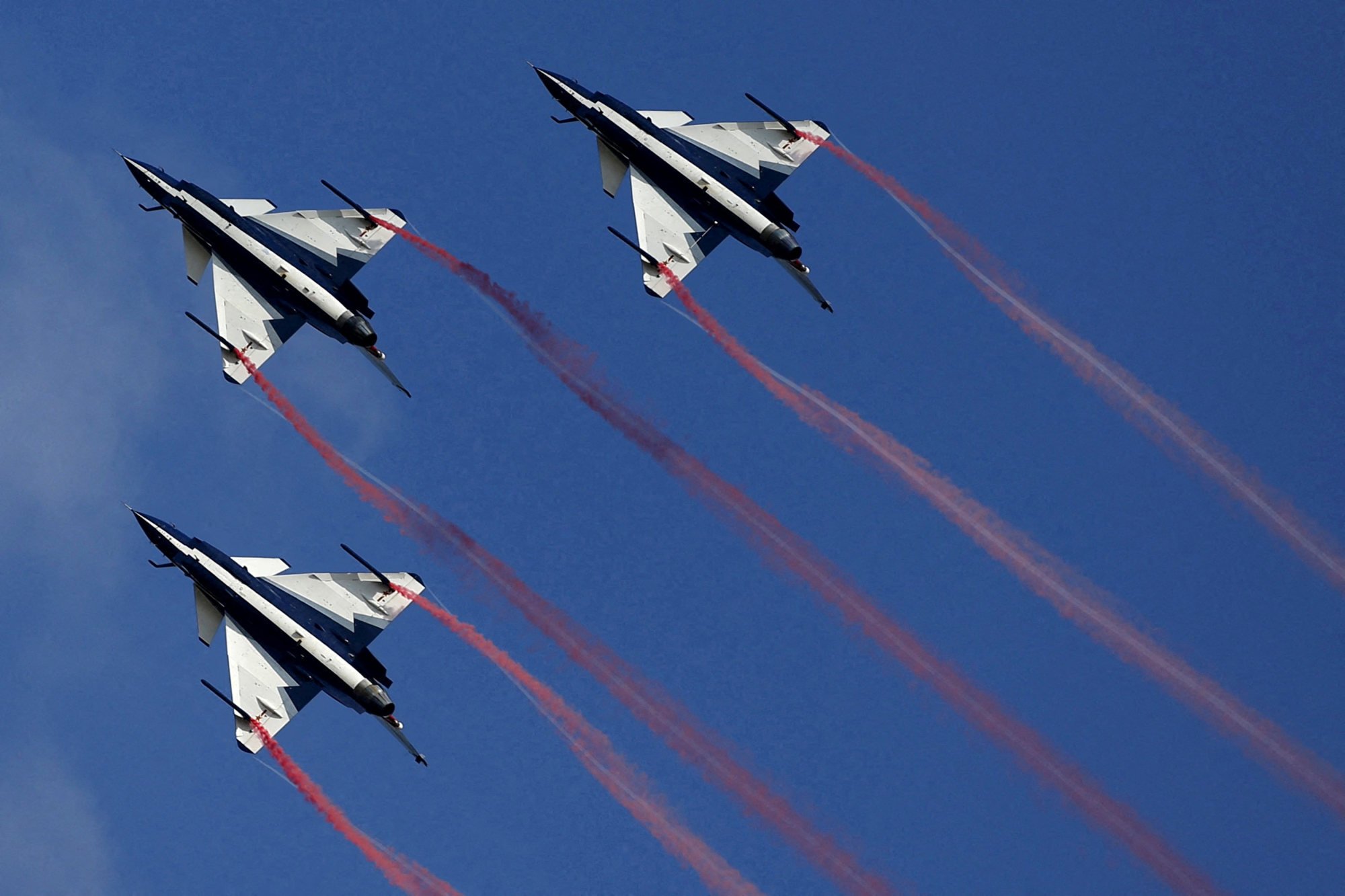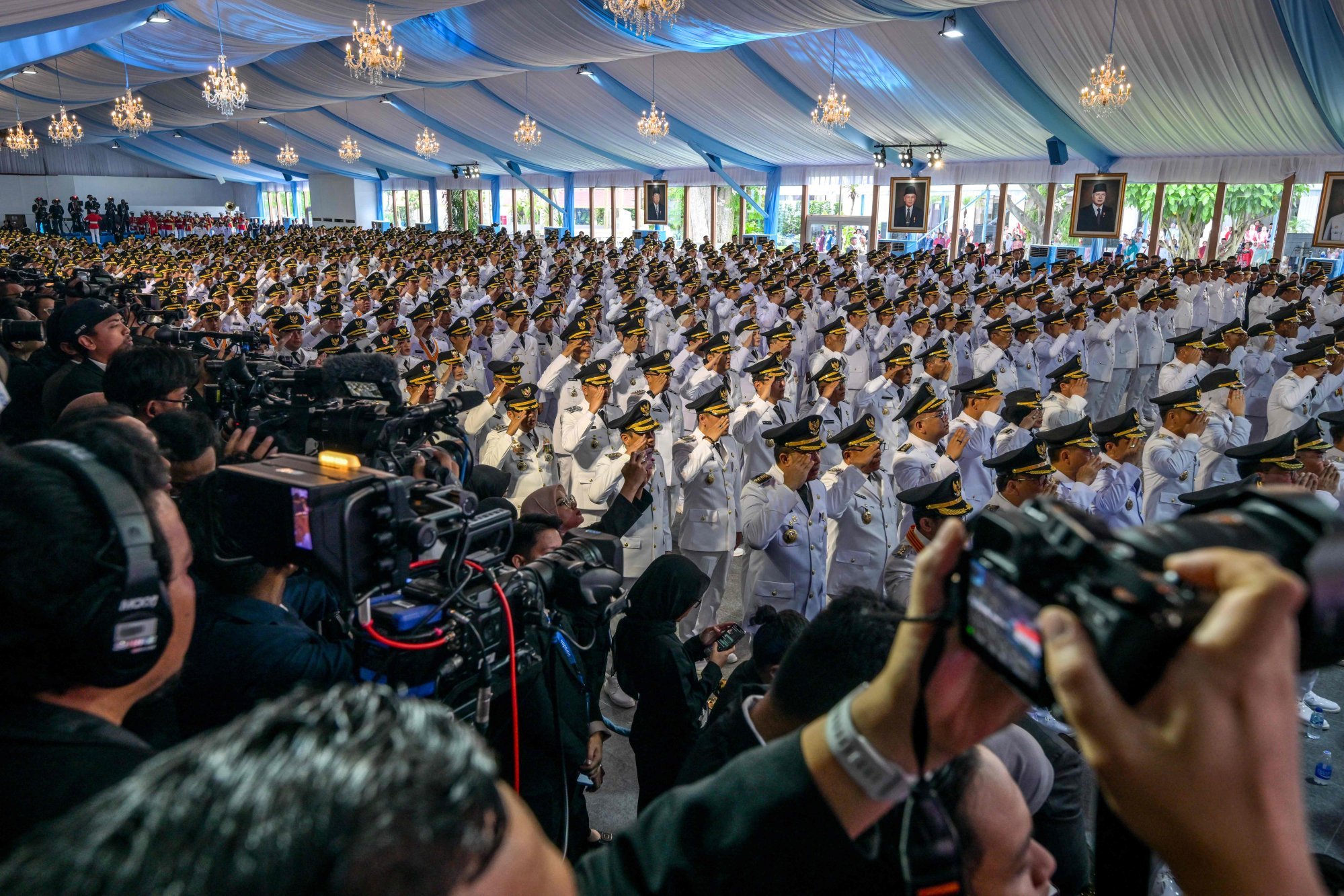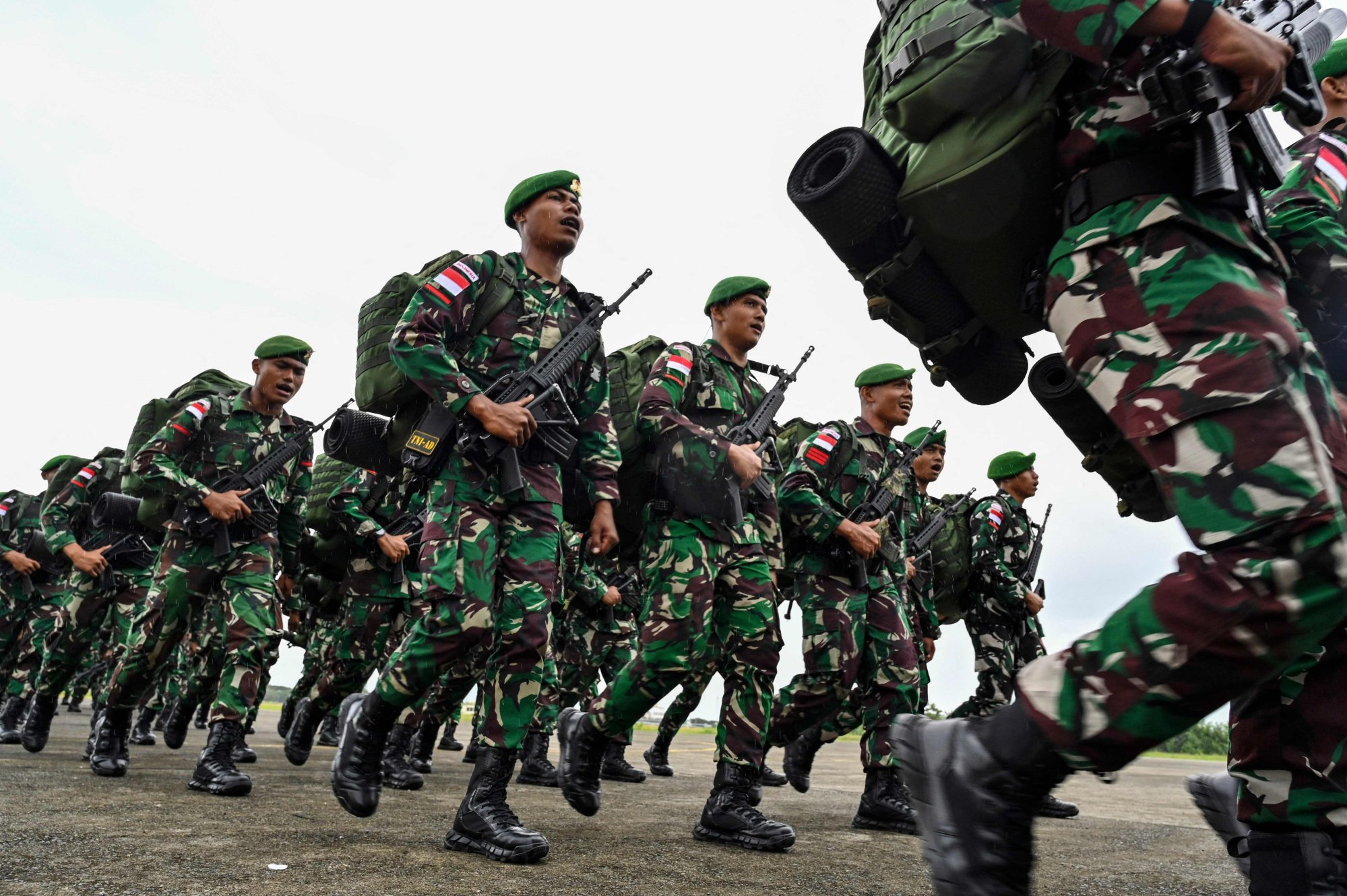Indonesia is buying more weapons – but can it sustain such defence spending?
Analysts question whether Indonesia has the wherewithal to finance and maintain its defence systems

Indonesia’s recent signing of several defence acquisition agreements has shed light on its desire to accelerate military modernisation, but its ability to finance and maintain new systems amid economic challenges has come under scrutiny by observers.
Last week, Turkey and Indonesia sealed an agreement for the sale of 48 units of the fifth-generation Kaan fighter aircraft during the INDO Defence 2025 exhibition held in Indonesia.
The deal, which will make Indonesia the first buyer of Ankara’s home-grown aircraft, was announced by Turkish President Recep Tayyip Erdogan on June 11, in a post on X.
Valued at about US$10 billion, the deal includes the production and delivery of the advanced aircraft to Indonesia over a 10-year period, according to the Turkish Anadolu Agency.
Kaan is a fifth-generation warplane that Turkey has worked on for almost a decade. First unveiled in 2023, the jet performed its maiden test flight last year.
Last month, France and Indonesia signed a defence agreement covering new orders of French military equipment, including Rafale fighter jets and Scorpene submarines, French President Emmanuel Macron said on May 28 during a visit to Jakarta.

Earlier this month, Indonesia was said to be considering the purchase of China’s J-10 fighter jets to modernise its ageing fighter fleet.
Last year, Indonesia asked Russia if it could buy more of its weapons, according to Russian media reports, which cited Indonesian security analyst Khairul Fahmi as saying that Jakarta was focusing on armoured vehicles and short-range defence systems.
In January, Indian media reported that Jakarta had initiated a US$450 million purchase of BrahMos cruise missiles from New Delhi.
Karl Gading Sayudha, a defence analyst at public affairs firm Kiroyan Partners, which specialises in Indonesian security, defence and geopolitics, said Jakarta was moving much faster in modernising its military arsenal compared with the previous administration.
President Prabowo Subianto could “bypass many layers of bureaucracy, giving him easier access” in securing foreign arms, Sayudha said.
“Unlike [former president] Joko Widodo, who placed heavy emphasis on infrastructure and economic development, which sometimes slowed or limited major arms deals, Prabowo believes strongly in the importance of military strength. This belief has changed the direction of Indonesia’s defence priorities.”
This explained why Jakarta was forging more defence partnerships with countries such as France, Turkey, Italy, the US, and others, Sayudha added.

Abdul Rahman Yaacob, a research fellow in the Southeast Asia programme at the Lowy Institute in Australia, said the recent arms purchases reflected Prabowo’s vision – first outlined when he was defence minister in 2019 – to modernise the Indonesian military.
“He continued with this vision when he was elected as president last year,” Rahman said, adding that Indonesian defence officials were supportive of Prabowo’s plans as some of the country’s equipment, such as submarines, needed to be modernised.
Over his five years as minister, Prabowo secured funding for high-end technologies for the air force and navy, underscoring his belief in the link between a country’s prosperity and its security, and that Indonesia needed a strong military to protect its interests.
Indonesia began acquiring Turkish weapon systems a few years ago as part of its arms diversification strategy to prevent being overreliant on any single arms supplier, Rahman said.
This policy stemmed from the US arms embargo on Indonesia from the late 1990s to 2005, according to Rahman. The restriction was linked to human rights concerns arising from the political crisis in East Timor during the period.
In 1999, following a UN-sponsored referendum in which the people of East Timor overwhelmingly voted for independence, the Indonesian military, along with pro-integration militias, orchestrated widespread violence and destruction across the territory.
This resulted in a humanitarian disaster and intervention by international peacekeeping forces, leading to East Timor gaining independence in 2002.

Given Indonesia’s current economic challenges, Rahman questioned if Jakarta had the financial means to acquire and maintain a substantial number of new equipment.
Apart from funds needed to support Prabowo’s universal free school lunch programme, a total of US$16 billion was cut in the budgets of various ministries and state agencies, including the Indonesian coastguard, in January.
Political and defence elites typically focused on the cost of the weapon platforms and often ignored the cost of spare parts and maintenance, Rahman said.
Arms purchases from the US
In April, Indonesia was reportedly considering purchasing billions of dollars’ worth of US-manufactured defence equipment, including fighter jets and munitions, to eliminate its trade surplus with Washington.
This came on the heels of US President Donald Trump’s global imposition of tariffs, including a 32 per cent levy on imports from Indonesia, which has been suspended until July.
While there is an agreement to purchase US-built F-15EX – a multirole fighter with advanced radars, sensors, and networking capabilities – Rahman said it was uncertain if the deal would go ahead.

This is due to the Indonesian military’s concern about potential arms embargoes or restrictions by the US affecting the operations of the fighter, which cost US$97 million each.
“The US attached many conditions on the use of its advanced weapon platforms when it sells to foreign buyers”, dictating how and in what circumstances they could be used.
“Going forward, Jakarta is more likely to be keen to purchase weapons from suppliers other than the US and China,” Rahman said.
Sayudha said Prabowo recognised the importance of acquiring new and advanced air assets, such as the F-15EX and Black Hawk helicopters, to modernise Indonesia’s air force.
Indonesia continued to rely on US hi-tech weapon systems and precision-guided munitions including smart bombs and missiles, he added.
However, the priority of the military modernisation process should be on the procurement of air surveillance aircraft given Indonesia’s need to have reliable “eyes in the sky” to coordinate operations more effectively, according to Sayudha.

“With a significant number of Rafale jets soon arriving, Jakarta should consider investing in this important technology,” he said, referring to the fighter jet’s ability to perform multiple roles including surveillance and reconnaissance.
“Given the vast territory that needs defending, additional support through air surveillance platforms such as Boeing E-7 or Saab GlobalEye would be a smart decision,” Sayudha added.
The Boeing E-7 is an advanced airborne early warning and control aircraft with the capacity to provide comprehensive surveillance, communications, and battle management data.
The Saab GlobalEye is a multi-role airborne early warning and control platform, which can provide long-range detection and identification of objects in the air, at sea and over land.
Air surveillance systems had been proven to play a critical role in strengthening air combat effectiveness, Sayudha said. “Both Turkey and the US offer excellent options in this area,” he added.